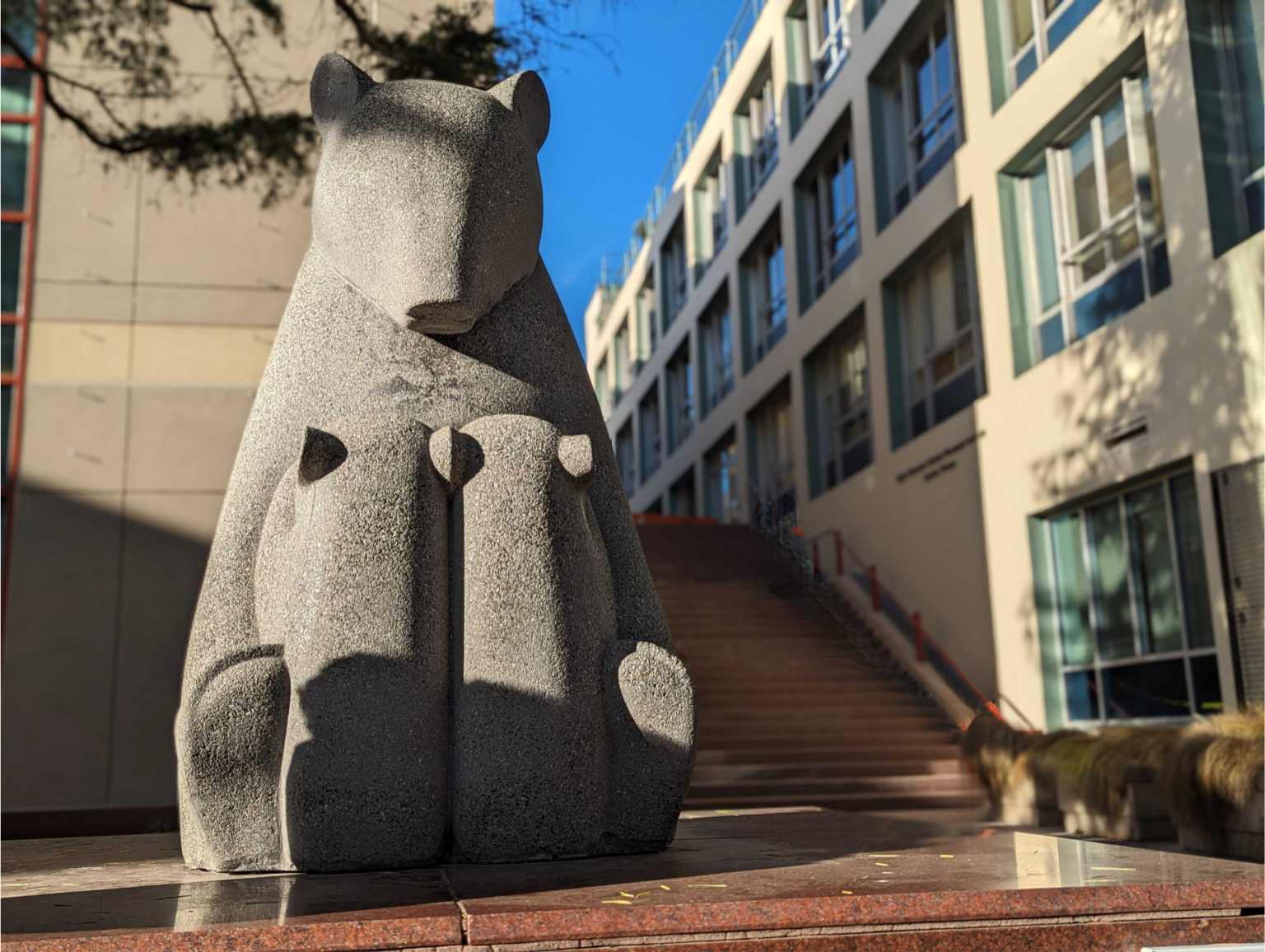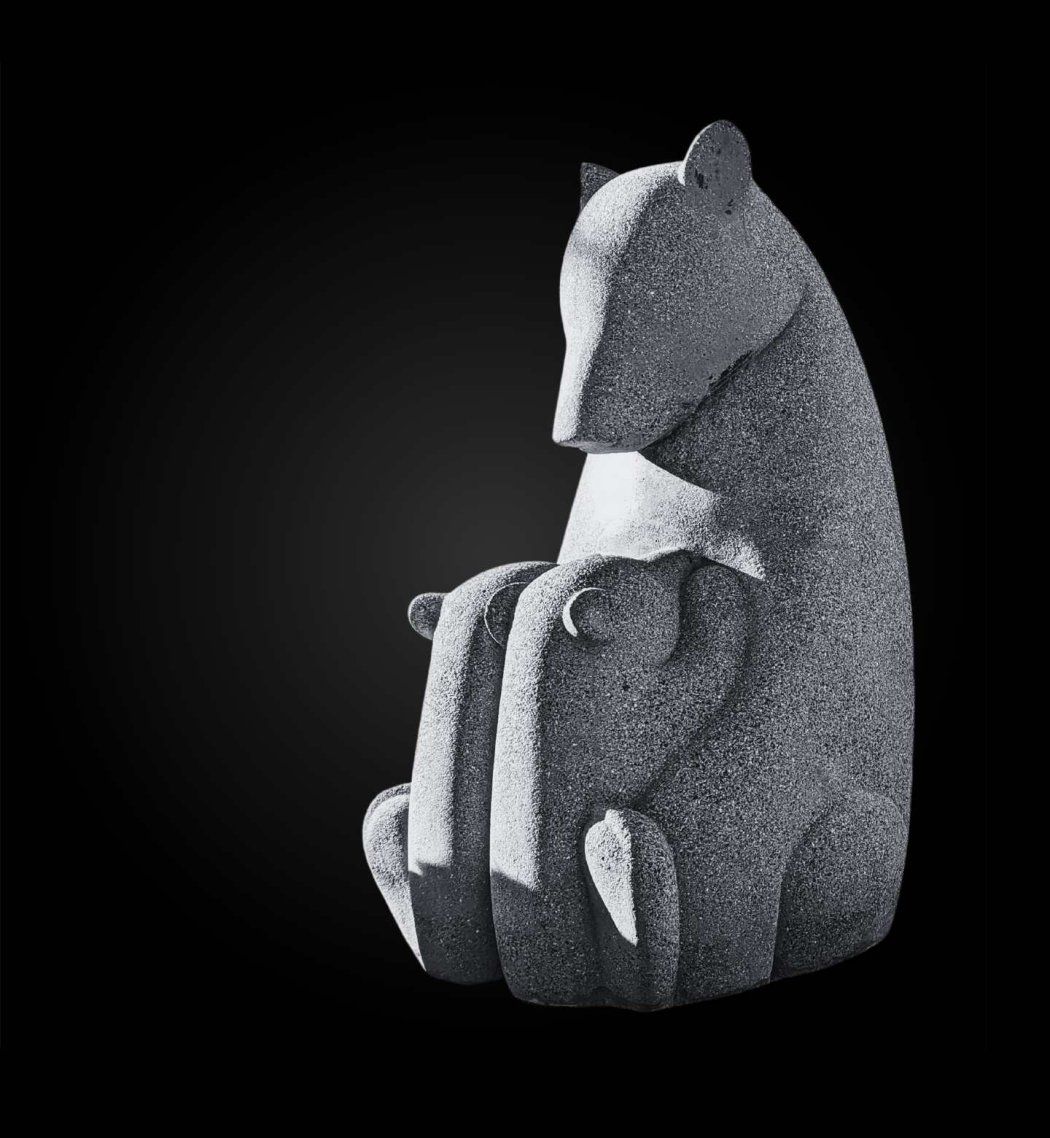Take a sample of UCSF colleagues and you’re bound to run into at least a few that agree the University’s “unofficial” mascot is a bear.
“I have heard the same rumors,” said Alicia Murasaki, UCSF campus architect, assistant vice chancellor of Campus Planning and UCSF Art Committee co-chair with Michelle Mourad, MD.
For some longtime staffers, like UCSF Retail Services Retail Tenant Specialist Robert Kirkbride, the bear and UCSF have forever been linked. “I just assumed the bear was always there,” he said.
Much of that sentiment can be traced to the granite sculpture of a mother bear nursing her young cubs in front of the Kalmanovitz Library at Parnassus Heights, or the fact that other University of California schools boast a bear as their mascot (UC Berkeley, UCLA, UC Riverside). It could also be because someone dressed in a bear costume occasionally pops up at UCSF events.
So, which is it? It’s actually all of the above.
“When people ask for the UCSF mascot for a website graphic, I always share the bear and cubs statue as our ‘unofficial mascot’,” UCSF Web Services Manager John Kealy said. “She seems like a caring bear. That feels like UCSF to me.”
In reality, UCSF has no official mascot. There have been various efforts over the years to select one, including student-led campaigns in the 1980s and 1990s, but nothing ever stuck.
Suggestions for nicknames in crowdsourced contests comically offered up the UCSF “Fearless Fog,” “Killer T-Cells,” “Placebos,” “Resistant Strains” and, yes, “Lactating Bears.” The common denominator in many of those attempts is reference to the Parnassus “Mother Bear and Cubs” sculpture by Beniamino Bufano, donated to the University in late 1968 as a gift from Robert Schindler, MD, former chair of the UCSF Department of Otolaryngology, his wife, and Bufano himself. The black granite sculpture’s arrival commemorated the UC’s centennial year and the 10th anniversary of UCSF’s Millberry Union.
It was at the front of the union for many years before being moved to its current spot at the library entrance.
‘He was ahead of his time’
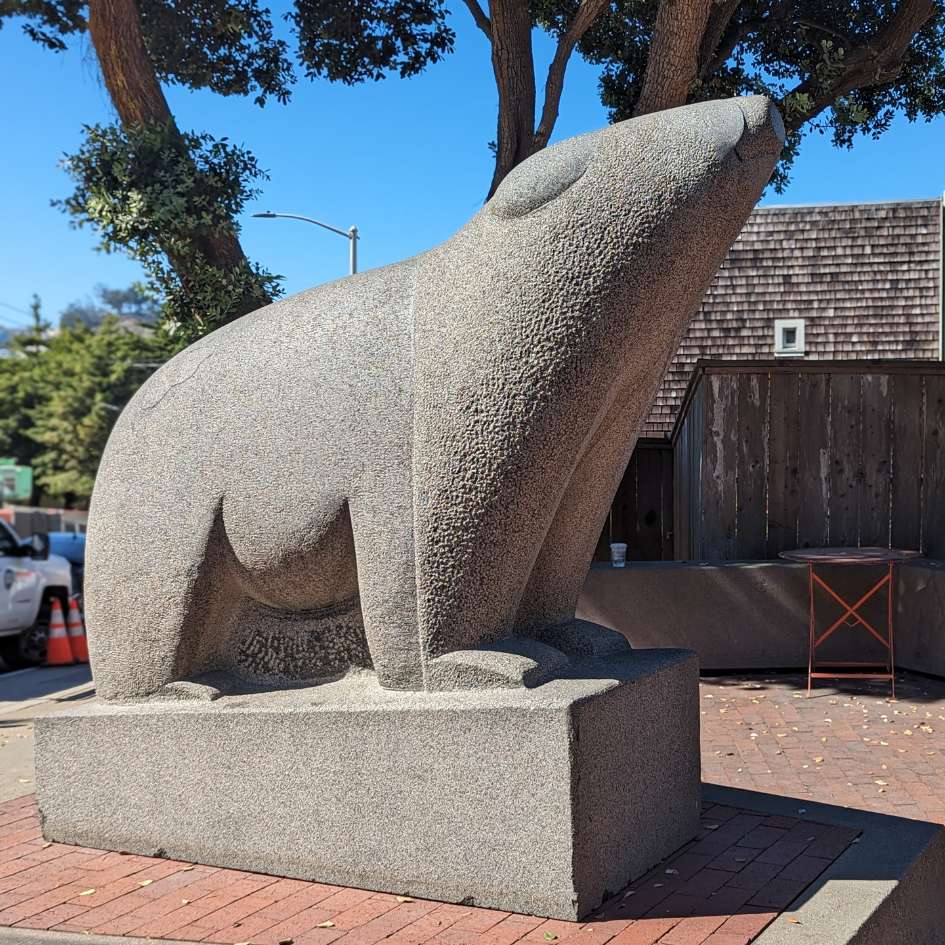
Bufano’s influence extends well beyond this particular sculpture.
It’s one of three Bufano pieces the University owns — a collection that includes another bear sculpture, this one a single bear on its own, just down the block at 3rd and Parnassus avenues. Another piece, a Madonna head, can be found across the street in Saunders Court.
The City and County of San Francisco owns 16 Bufano pieces in the Civic Art Collection, many of which are also granite animal sculptures, located in various parts of the city. “They’re pretty beloved,” said Allison Cummings with the San Francisco Arts Commission. “He’s kind of a native son. There’s a certain amount of pride and his work is very recognizable.”
Bufano, an Italian immigrant who made his home and career mark in San Francisco from World War I until his death in 1970, also was an outspoken pacifist, making him somewhat controversial for an artist in his heyday.
“It was pretty radical (for that time period). He was ahead of his time,” said Bianca Fruindi, curator of San Francisco’s Museo Italo Americano.
Many of Bufano’s pieces reflect his worldview.
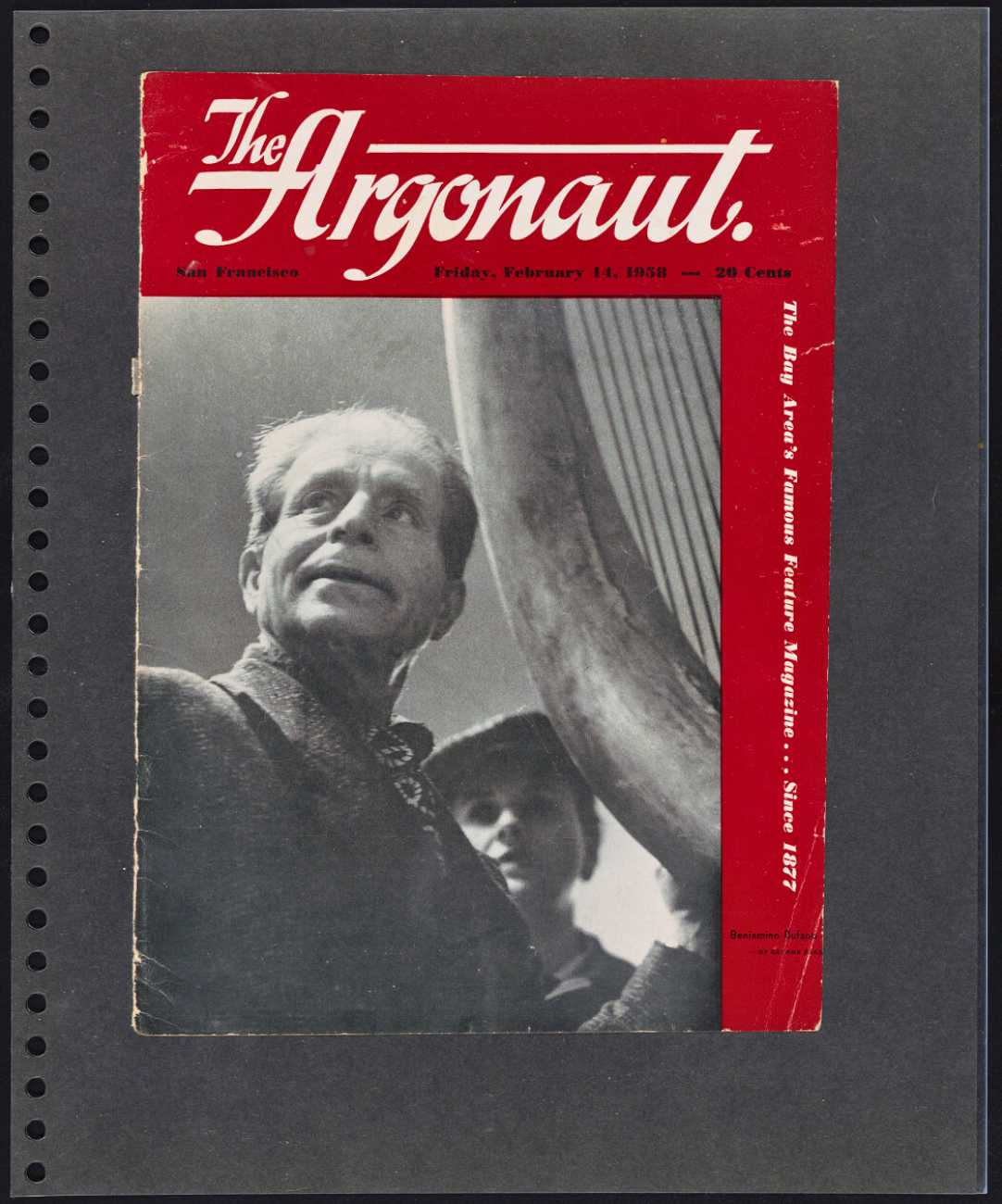
San Franciscans might also be familiar with his prominent “St. Francis of the Guns,” located at City College of San Francisco. The sculpture came about in the aftermath of the tragic 1968 murders of Martin Luther King, Jr. and Robert Kennedy. When then-Mayor Joseph Alioto ran a gun collection campaign, Bufano melted down the firearms to fashion the nine-foot-tall figure that features the faces of MLK, Kennedy, his brother, John F. Kennedy, and Abraham Lincoln.
Other Bufano pieces of similar size and political feel, like his 38-foot-tall, missile-shaped “Peace” monument, can be found in places such as Fort Mason, San Francisco neighborhoods and various museums. His charming animal sculptures are all over: Washington state, the Johns Hopkins University, and Bay Area public spaces and wineries, to name just a few. “The way he sculpted, the simplicity of his work and the fact his statues were so pleasant to look at, it made them captivating for the public,” Fruindi said. “How can you not be moved by those animals?”
UCSF’s ‘most beloved’
The UCSF Art Committee is responsible for curating and maintaining the roughly 1,100 pieces in the University’s enormous collection across campus and UCSF Health locations.
“We have art that is world-renowned, art that would otherwise be collected by museums,” Murasaki said. “Paintings, multimedia, sculptures and artifacts. One of the things I appreciate about UCSF’s art collection is we don’t have an art school, art faculty or a museum, yet we place a premium on giving people a respite from their busy day with these pieces. I think it plays a part in innovation. It takes you out of your normal, everyday experience and helps you see the world in a different way.”
As for “Mother Bear and Cubs,” Murasaki agreed the figure “might be the most beloved” across the UCSF footprint. “It’s a very cute bear,” she added.
Whether on purpose, by chance or widespread affection for Bufano’s “Mother Bear and Cubs” granite cast, UCSF isn’t the only place a cast of the sculpture’s mold can be found. In the Bay Area alone, there are “Mother Bear and Cubs” granite sculptures at Hillsdale Shopping Center in San Mateo, the Oakland Museum of California and a public park in Piedmont. Outside Northern California, “Mother Bear and Cubs” also adorns sculpture gardens at the Oregon Zoo in Portland and a hotel in downtown Honolulu, Hawaii, plus several other U.S. locations.
“My impression is that Bufano was really deliberate in casting the sculptures to increase his original artwork,” said Carin Adams, curator at the Oakland Museum of California. “He was trying to make public artwork out of everyday materials and he thought of each of his sculptures as a series. The bears were cast and he had multiples of them.”
The one at the Oakland museum was there when it opened in 1969.
“You could describe them as sisters,” she laughed.
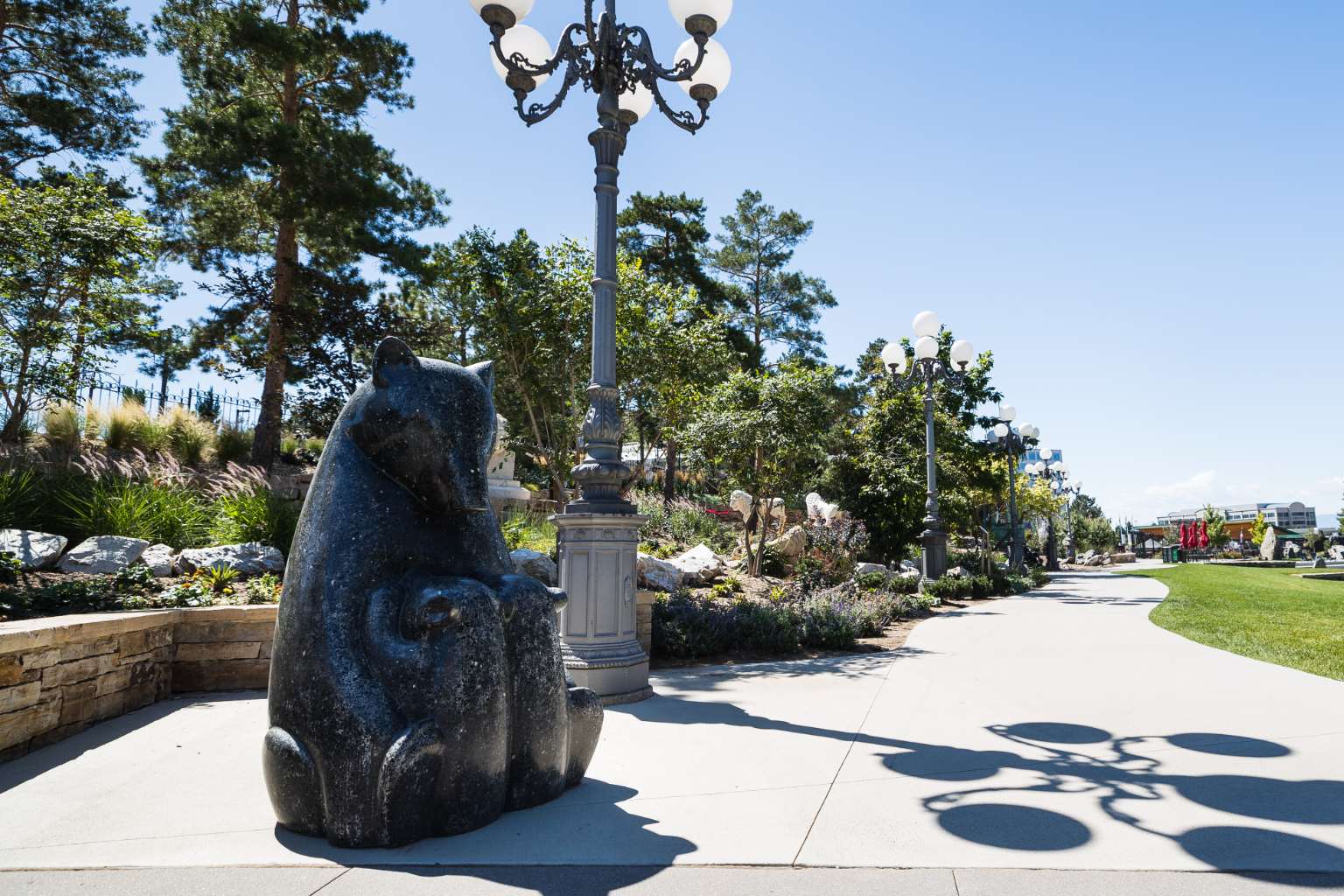
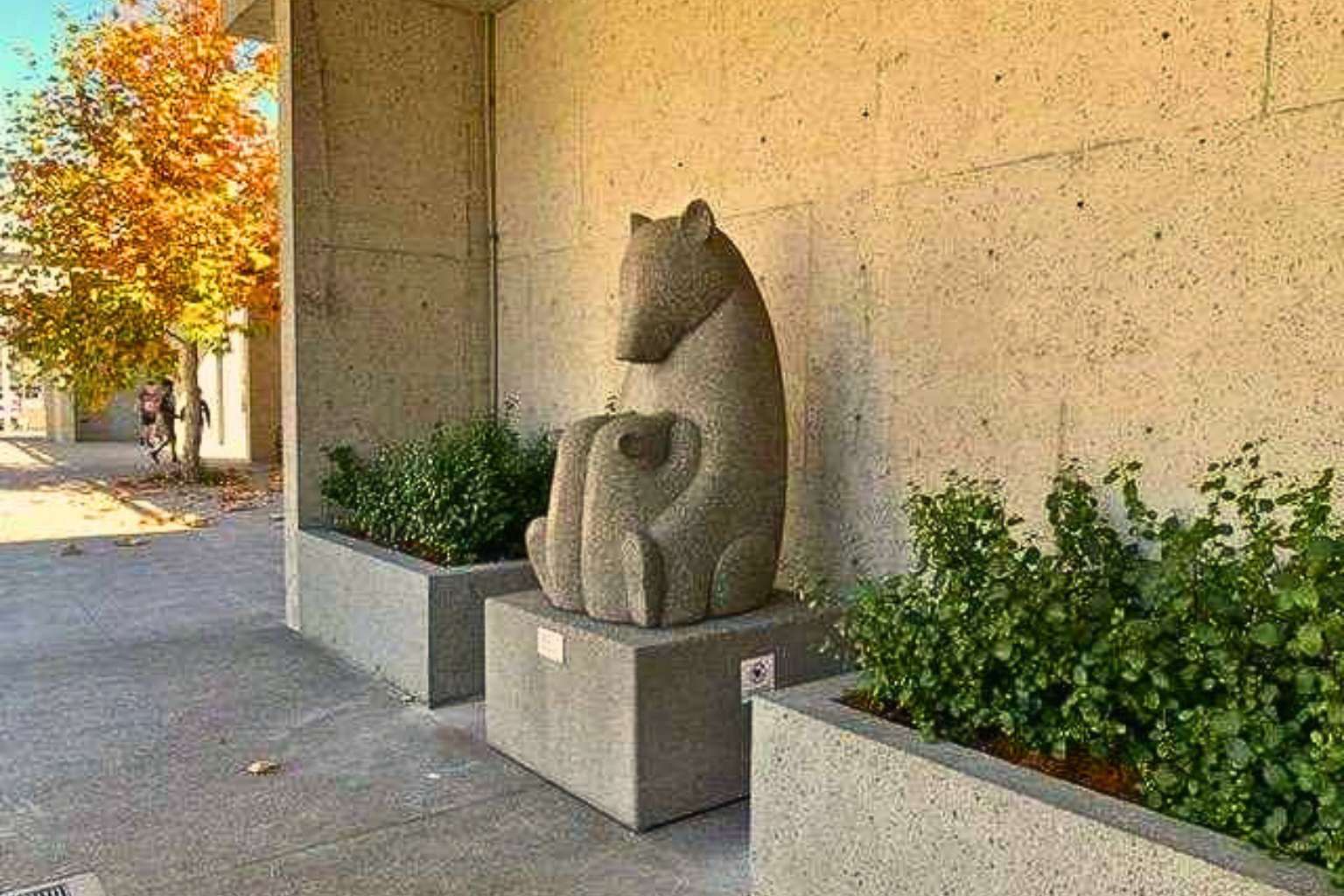
A bear for the ages
Unofficially, the bear has been connected with UCSF for over a century.
The University’s founding dates back to 1864 when it was first called Toland Medical College. Its founder, South Carolina surgeon Hugh Toland, secured an affiliation with the University of California after it opened a Berkeley campus in 1868. As many know, UC Berkeley’s varsity mascot is the golden bear. The nickname originated in 1895 when Cal track and field athletes carried a banner of the California state emblem at several meets. Thus, the association with the “bear” moniker was born.
But, because UCSF doesn’t have varsity sports, the University never officially adopted a mascot the way Cal did. A 1937 College of Pharmacy publication mentions UCSF medical students showing their “loyalty” to the Golden Bear varsity football team with “a Big Game Rally and Bonfire” attended by the Cal band. The school, known at that time as the Affiliated Colleges, even sponsored a “Big Game Rally Dance” decorated with blue and gold balloons.
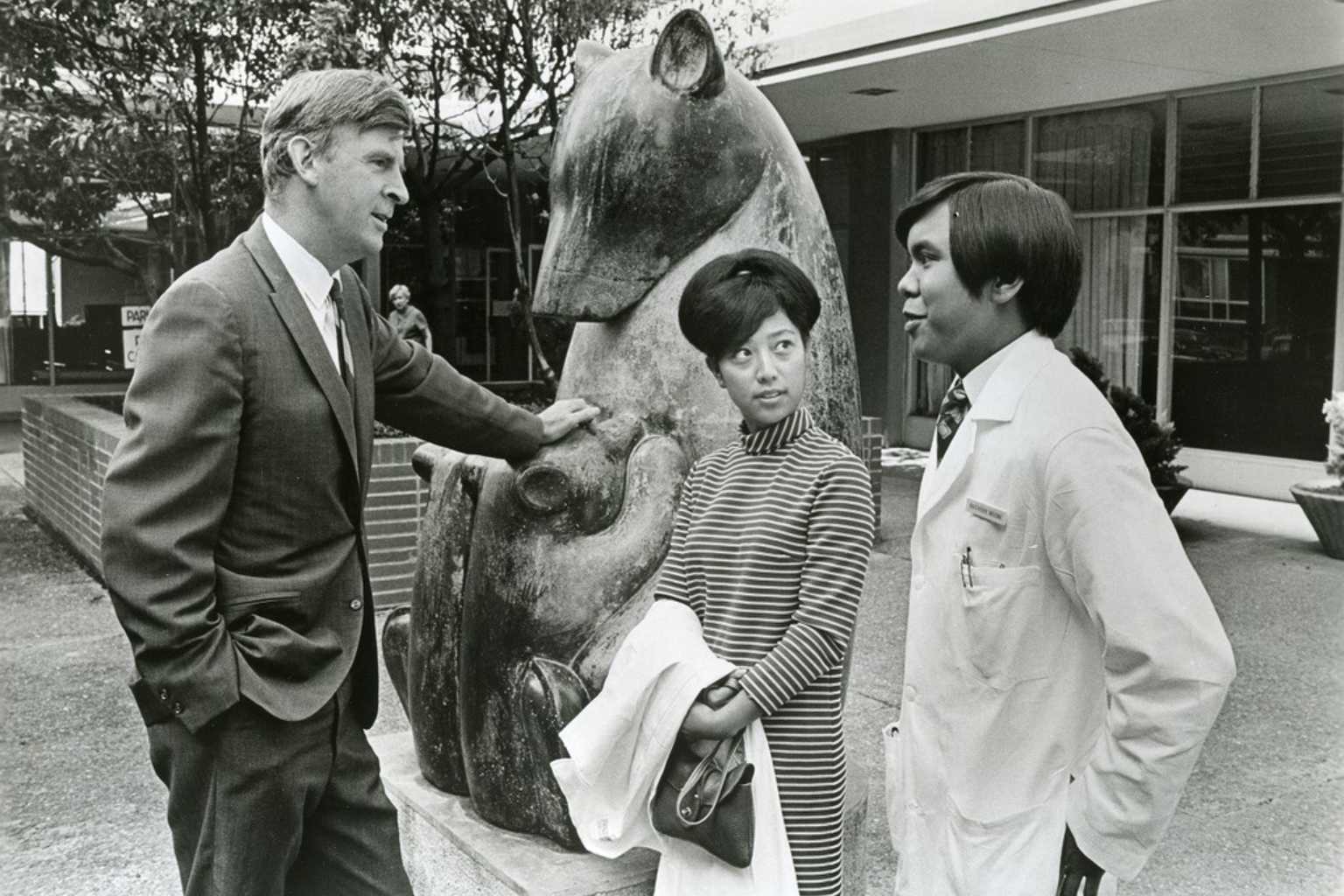
As the decades progressed, the bear remained part of the UCSF fabric.
No one knows that more than Kirkbride, who has donned a costumed version of the UCSF bear for the better part of two decades. “When I came to UCSF over 25 years ago, there was a bear costume called ‘Millie’ that someone would wear,” he explained.
Of course, the name “Millie” pays homage to Millberry Union, the original home of “Mother Bear and Cubs.”
Kirkbride eventually made his way into the bear suit rotation due in large part to a persistent colleague, just as UCSF acquired updated costumes in the early 2000s.
“We got two good bear costumes to interchange, maybe three at some point,” he recalled. “We’d have two or three people rotating because those costumes get really hot.”
To the delight of many, the bear would often appear at UCSF sponsored events like the annual Student Organization Fair, AIDS Walk San Francisco, various staff appreciation activities and more. “People would start looking forward it and would miss the bear when it wasn’t there,” he said. The most recent appearance of the UCSF bear came before the COVID-19 pandemic as in-person events were paused for public safety, Kirkbride added.
“People keep asking about it. They haven’t seen it in a couple years. They often ask, ‘When’s the bear coming back?’ I have such fond memories of the bear.”
Until then, the bear costume is hibernating in an undisclosed campus location waiting to emerge again. The Bufano sculpture, however, isn’t going anywhere, and is permanently planted at the Parnassus campus library entrance ready to warm the hearts of UCSF faculty, staff and learners all over again.
